IoT in transportation: 8 examples of how it can improve the future
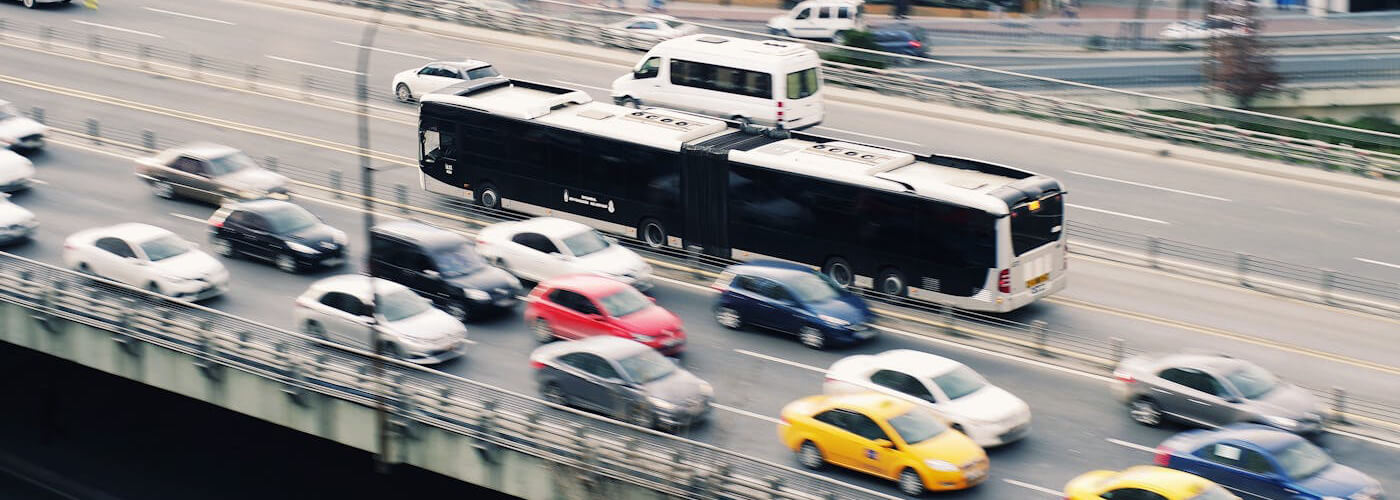
The transportation and logistics sector has always been heavily influenced by technology. Technological progress has continuously enhanced operational efficiency and spurred innovation within the transportation sector, from the creation of shipping containers to the implementation of GPS tracking. Today, as global logistics grapples with growing demands and obstacles, it is looking to innovative IoT solutions to enhance its operations. In this light, integrating the Internet of Things in transportation is no longer just an improvement but a necessity.
What is the role of the Internet of Things in transportation & logistics?
The transformative power of IoT in transportation and logistics makes the industry more technologically advanced. It collects and analyzes data and uses it to automate routines and processes. The data gives invaluable insights into the effectiveness of the transportation and logistics components and the entire system.
Brief overview of IoT (Internet of Things) technology
IoT stands for Internet of Things, it’s a network of interconnected devices. The IoT devices can vary significantly, from tiny sensors to complex robotic systems. IoT in the transportation industry involves integrating IoT devices that collect and share data and communicate without human involvement. IoT solutions allow sensors, vehicles, and equipment to connect and synchronize over the internet, leading to a more dynamic, responsive, and interconnected logistics environment.
Impact of IoT on the transportation industry
The global economy relies heavily on transportation and logistics that enable the flow of goods across countries and continents. In addition, the increasing number of vehicles and means of public transportation demand better management for safer and more comfortable environments.
IoT in transportation has the potential to streamline industry management by implementing digital solutions. The influence of IoT is extensive, benefiting individual commuters, the automotive industry, city infrastructure, commerce, and organizations in general.
Benefits of implementing IoT solutions in shipping and logistics
Increased operational efficiency through real-time data and automation
IoT devices collect traffic conditions, road closures, accidents, and weather data. The logistics managers can use this information to optimize routes dynamically, help drivers find the most efficient path, and avoid delays. As a result, vehicles spend less time idling, minimizing fuel consumption and reducing delivery times.
Enhanced safety by monitoring and analysis
IoT transportation technology like vehicle telematics is used to monitor vehicle performance and driver behavior. Continuous monitoring enables better vehicle and cargo security through alerts for unauthorized access, potential hazards, or other emergencies. Analysis of the speed, location, maintenance, and internal vehicle operation data contributes to the driver’s safety and optimized performance for commercial vehicles.
Improved customer service due to faster delivery
IoT solutions for logistics enable real-time tracking of cargo and vehicles. GPS and RFID allow transport and logistics companies to track the exact location of their cars and the goods they are transporting. Thanks to advanced data analytics, transportation agencies can predict delivery times more accurately improving customer satisfaction.
Environmental sustainability and resource optimization
Internet of Things in logistics optimizes the route using data about traffic conditions, weather, and road closures. This data helps reduce driving distances, fuel consumption, and idle time, lowering CO2 emissions. Predictive maintenance extends the vehicles’ lifespan preventing breakdowns. It reduces the need for emergency repairs, predicting maintenance needs before failures occur.
Supply chain visibility and transparency
What is the future of IoT in the supply chain? IoT sensors and GPS trackers provide real-time location data for shipments, vehicles, and assets, allowing logistics managers to monitor the movement of goods from origin to destination. This supply chain visibility helps identify delays or disruptions early, enabling proactive problem-solving. Having timely access to data regarding asset locations, status, and conditions enables efficient inventory management and resource usage optimization.
Scalability and flexibility of IoT solutions
The increasing volumes of data require scalable IoT solutions to maintain the necessary performance. As the market changes, companies can adjust their IoT deployments to integrate new types of sensors, add more vehicles, or enter new geographic areas. Scalable IoT solutions for transportation can seamlessly integrate with other business systems, such as ERP, TMS (Transportation Management Systems), and WMS (Warehouse Management Systems) for process synchronization across the entire logistics network.
Components of IoT systems in transportation
IoT in transportation consists of various interconnected components that collect, process, and analyze data.
Sensors and devices
These components collect data from vehicles, assets, and cargo. They help get precise information about vehicle performance, driver behavior, traffic conditions, inventory usage and location, truck space usage, and more. They are represented by:
GPS trackers
Environmental sensors
Telematics devices
RFID and barcode scanners
Cameras and LIDAR
Weight sensors
Connectivity
It ensures data transmission between vehicles, sensors, and central systems, and facilitates short-range and long-range communication between devices. These technologies connect various IoT links into a single multifunctional system. Some of the examples are:
Cellular networks
Wi-Fi
Bluetooth
Satellite communication
LPWAN
Data analytics
To make the collected data usable, it has to be properly analyzed. Analytics software processes the information to predict maintenance needs, optimize routes, adjust delivery schedules, or anticipate future events like traffic jams. Here are several examples:
Analytics software (Geotab, Descartes, FourKites, etc.)
AI and machine learning models
Predictive analysis methods
User interfaces and apps
These are mediators between the data and the user: they transform the collected data into actionable insights that can be directly used by drivers, logistics managers, customers, operators, and other participants. Some examples include:
IoT solutions for fleet management
Driver apps
Customer portals
Control centers
Databases and cloud infrastructure
Sensors and devices collect immense amounts of data that has to be stored somewhere. Cloud and data storage solutions can handle large volumes of information generated by IoT devices. Some solutions also include analytics, reporting, and data visualization. The solutions include:
Cloud platforms
Edge cloud solutions
8 use cases of IoT in transportation and logistics
Traffic management
Traffic sensors and cameras are placed at intersections, roads, and other strategic locations to collect data on vehicle count, speed, and traffic density. The data helps in the real-time monitoring of traffic conditions. Traffic lights can also be managed according to the load: if there’s heavy traffic, the system can extend the green light duration to ease congestion.
Smart traffic management systems can quickly detect traffic accidents or roadblocks and respond by alerting emergency services, redirecting traffic, and informing drivers through dynamic message signs or navigation apps.
Smart parking systems are aimed at helping drivers find parking spots faster. The technology involves cameras, sensors, data analysis, and mobile apps to optimize parking space usage. Some solutions allow drivers to book a parking spot beforehand so that there would be a guaranteed place to park.

Passenger ticketing and information system
Passenger ticketing and information systems are widely used in buses, trains, subways, and other forms of public transport. Contactless payments allow passengers to pay for their tickets with credit or debit cards, mobile wallets, or transport cards directly on the bus or train. This speeds up the boarding process and reduces the need for cash handling.
E-tickets are virtual tickets that can be purchased online and either stored on a dedicated app on a smartphone or received via email or SMS. QR codes of NFC technology are used to validate the ticket.
Smart systems are more friendly to non-native speakers, displaying and announcing information in multiple languages. A smart system has higher accessibility: it often includes audio announcements, visual displays, and tactile information for passengers with disabilities.
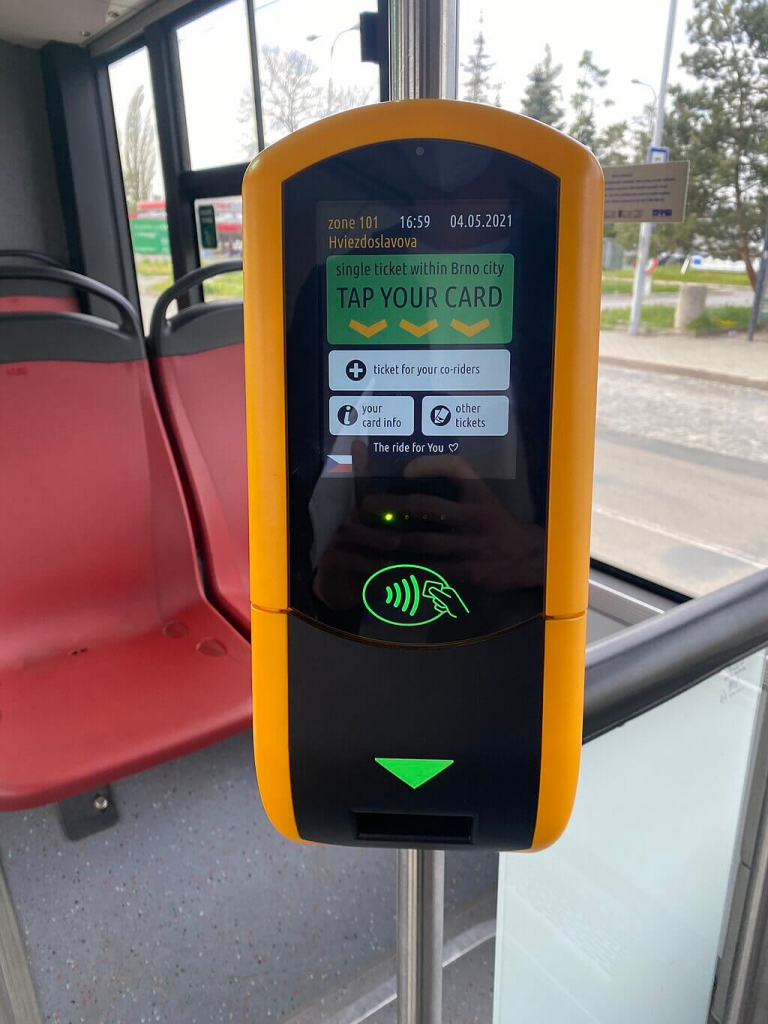
Connected cars
Smart cars feature internet access, wireless connection, and embedded sensors. Connected cars can communicate with each other, road infrastructure, pedestrians, and the cloud. This helps enhance traffic management and improve overall road safety.
IoT in transportation allows connected car owners to interact with their vehicles remotely via mobile apps. They can lock and unlock doors, start the engine, locate the vehicle, and check the status of critical systems like fuel level and battery charge.
Advanced driver assistance systems, or ADAS, assist while driving. IoT sensors, such as cameras, radar, and LIDAR, provide data that supports adaptive cruise control, lane-keeping assistance, automatic emergency braking, and collision avoidance.
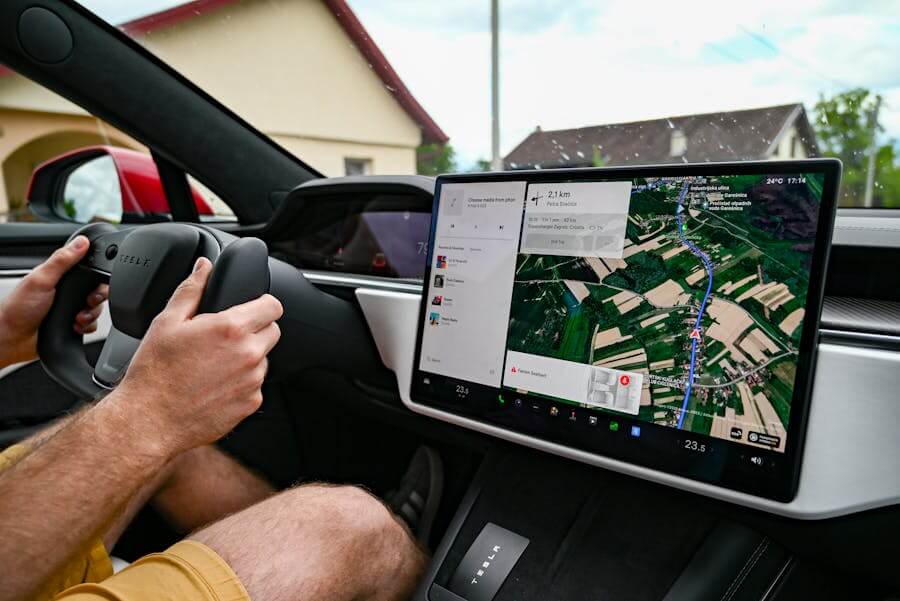
Vehicle tracking systems
It’s a solution that leverages IoT devices, sensors, and connectivity to monitor and track the real-time location, status, and various parameters of vehicles. These systems are widely used in transportation and fleet management, logistics, personal vehicle tracking, and the automotive industry in general.
Businesses with large fleets — delivery trucks, taxis, buses — use the systems to monitor and manage their vehicles effectively. The system also helps track goods in transit, optimize logistics operations, and ensure timely delivery.
The vehicle tracking system can also help rental and leasing businesses track the cars, monitor use, and plan maintenance more efficiently. Public transit agencies can track their fleet and driver behavior to enhance passenger safety.

Public transport management
Another IoT application in transportation is real-time vehicle tracking systems. IoT devices with GPS and other sensors are installed on buses, trains, and trams to track their real-time location. This data is sent to a central public transport management system, allowing operators to monitor vehicle positions, speeds, and routes.
IoT enables real-time communication of information to passengers through passenger information systems. Using this technology, passengers can get timely updates on arrivals, departures, delays, and service changes to plan their journeys based on real-time data.
Surveillance systems in public transport can detect suspicious activities or emergencies. IoT systems can automatically alert emergency services, providing them with the exact location and nature of the incident.
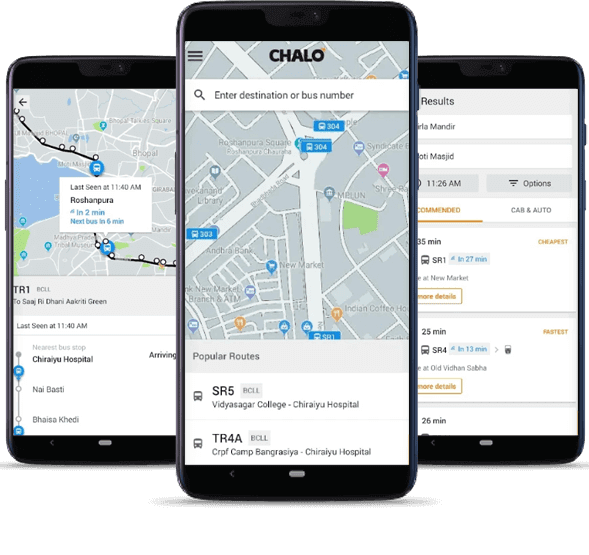
Railways
Trains are equipped with GPS and other sensors to track their exact location and movement in real-time. Data from all trains is sent to a central control center where operators can oversee the entire network. This helps manage train traffic, avoid collisions, and ensure optimal use of tracks.
IoT sensors monitor the condition of train parts, such as wheels, brakes, engines, and electrical systems. The data collected from these sensors is analyzed to predict when maintenance is needed. This allows performing maintenance before a failure occurs, reducing downtime and extending the life of equipment.
IoT can also monitor the railway infrastructure: tracks, bridges, tunnels, and more. Sensors can detect issues like track misalignment, cracks, or temperature changes, allowing for timely repairs to prevent accidents.

Trucking and logistics
GPS tracking allows real-time location tracking of vehicles, containers, or individual packages thanks to various sensors. This helps logistics companies monitor the exact position of assets throughout the supply chain.
IoT-enabled telematics systems collect data about vehicles’ speed, fuel consumption, driving behavior, and engine diagnostics. This data helps managers monitor and optimize fleet performance, improve driver safety, and reduce operational costs.
IoT in logistics positively impacts customer satisfaction, allowing customers to track their shipments. Clients can monitor the progress and receive more accurate estimates of delivery times.

Electric vehicles and EV charging
Owners of e-vehicles can use connected apps to remotely control cars’ functions like monitoring charge status, setting charging schedules, or even pre-conditioning the cabin before the ride. IoT can integrate EV charging with smart parking solutions, allowing drivers to book charging spots and receive navigation assistance to the nearest available charger.
Smart charging stations collect data on energy consumption, charge status, and station availability. This information helps operators monitor the status of multiple charging points in real-time, allowing them to optimize operations and reduce downtime. IoT can also help integrate renewable energy into the charging process, further reducing the carbon footprint of EV charging.
IoT sensors monitor the health and performance of charging stations, enabling operators to detect and fix issues remotely before they escalate. This minimizes downtime and ensures reliable service.
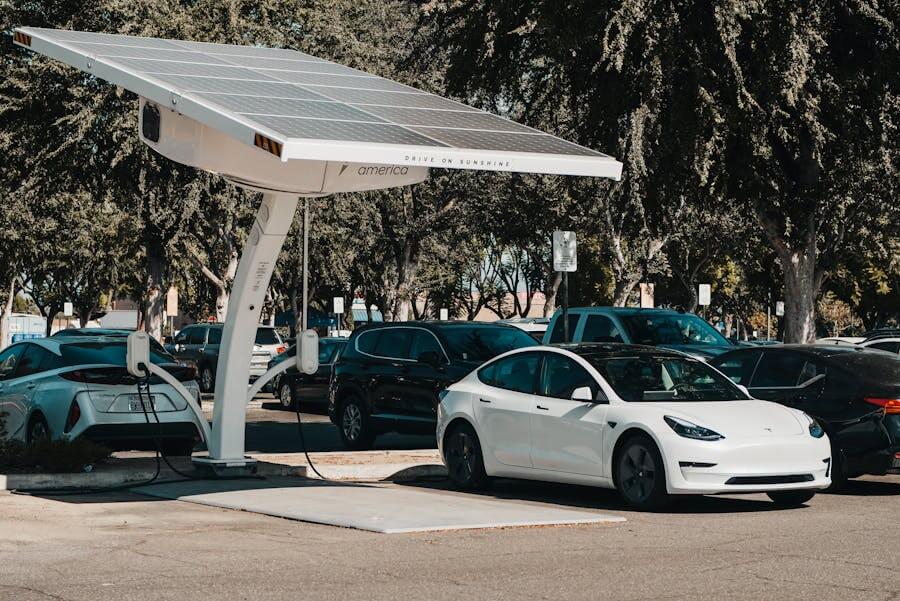
Range of challenges of IoT in the transportation industry
The adoption of IoT technologies in transportation and logistics brings numerous benefits, yet it also presents challenges. Let’s have a detailed look at some of them.
Data privacy and security
IoT systems, just like all other systems, are vulnerable to cyberattacks, hacking, and data breaches. The data generated by IoT devices is extremely sensitive as it includes real-time vehicle locations, route patterns, and driver behavior. To protect the system and its data, the storage and connection should be encrypted and the system should use robust authentication mechanisms. For advanced safety, it’s possible to conduct security audits and penetration testing.
Integration complexity
The industry often uses a mix of legacy systems and new solutions, devices from different manufacturers, and different communication protocols. The lack of standardization often results in compatibility issues, leading to complications in data sharing. The overcoming strategies include using middleware platforms to connect old and new systems, investing in IoT platforms that support open standards, and developing a comprehensive integration strategy addressing all the communication difficulties.
Scalability and management
As the number of IoT devices grows, managing, monitoring, and updating them becomes increasingly complex. The massive amount of data generated by IoT devices can overwhelm existing IT infrastructure, and scaling up IoT solutions requires investment in cloud infrastructure, data storage, and network bandwidth. The solutions include using scalable cloud-based IoT management platforms and implementing edge computing to process data closer to the devices and reduce the load on central servers.
Cost implications
Implementing IoT solutions involves significant upfront costs, including purchasing sensors, devices, connectivity infrastructure, and cloud services. Maintaining the infrastructure isn’t cheap, and managing the data will again cost a pretty penny. Conduct a cost-benefit analysis to determine the long-term ROI of the future IoT solution. In the beginning, use scalable cloud services and pay based on actual usage rather than fixed installments.
Reliability and connectivity issues
IoT systems rely on continuous connectivity to function effectively. In the transportation sector, connectivity can be inconsistent due to signal dead zones, especially in remote or urban underground areas. IoT devices deployed in transportation can be exposed to harsh environmental conditions, leading to potential hardware failures and data loss. To prevent bad consequences, consider supporting multiple communication technologies (cellular, Wi-Fi, satellite) and implementing backup power sources to enhance reliability.
Future trends and innovations in IoT-enabled transportation
IoT is here to stay, so what does the future hold for IoT in transportation? Here’s a brief overview of the trends.
Autonomous vehicles, powered by AI and ML, use IoT sensors to navigate without human intervention;
IoT-enabled drones are increasingly used for last-mile delivery, aerial inspection, and monitoring;
AI and IoT are integrated to optimize logistics and supply chains by predicting demand, automating inventory management, and improving route planning;
IoT is driving sustainable transportation supporting electric public transport, bike-sharing, and carpooling services;
Digital twins — virtual replicas of physical cities — enable operators to monitor real-time conditions, predict outcomes, and make data-driven decisions.




